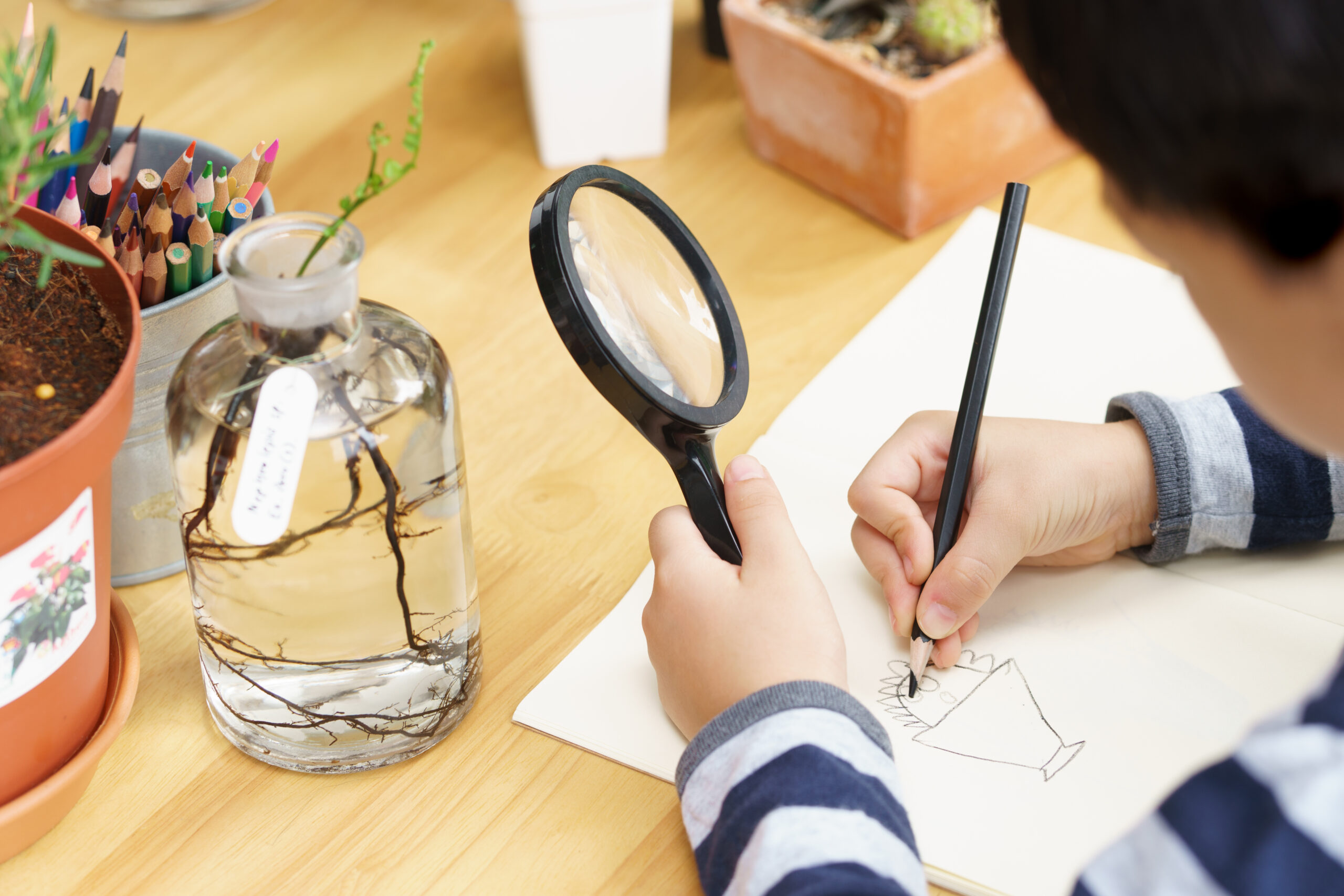Observation is central to the artistic experience. Whether it’s illustration, traditional painting, or digital art, observation provides much-needed inspiration for artists of all kinds, allowing them to synthesize what they see and reflect some essence of that back in visually impactful artistic works.
Often, illustrators and artists look to static visuals as simple inspiration while placing more of an emphasis on their own creative concepts. Sometimes, though, artists prefer to directly depict whatever they see — or they do this as a skill-building technique. Regardless of the reason, it’s clear that observational drawing has a powerful role to play in numerous forms of artistic training, particularly in illustration where capturing life-like accuracy is often crucial.
Not convinced that observational drawing is worth the effort? Keep reading to learn: What is observational drawing, and which observational and drawing techniques are most effective?
The Essence of Observational Drawing
Observational drawing is both simple and highly nuanced. At its most basic level, it involves the straightforward practice of drawing what you see, which is a fundamental skill in the field of illustration. This could be an object or a person who is physically in your presence, although pictures and photographs can also be incorporated into observational drawing efforts for illustrative works.
The main quality that distinguishes observational drawing from other artistic endeavors is its focus on drawing what is seen while remaining true to the original object. The completed drawing may not look exactly like the item, person or landscape it seeks to emulate, but it won’t add further concepts or details from the artist’s imagination.
While it may not form the basis of today’s most compelling or visually inspiring projects, observational drawing is imperative from an artistic development standpoint. It is through observational drawing that aspiring artists gain an in-depth understanding of proportion, shading and other critical concepts. Students can only learn so much while reading about these essentials; eventually, it’s necessary to apply them through practice.
In addition, observational drawing is crucial for developing soft skills that may be more difficult to define, such as attention to detail. During detail-oriented observational drawing sessions, artists train their eyes to take in every feature: Textures, lighting conditions and angles quickly come into play. By directly comparing the completed work to the subject, it should immediately become clear when key elements are missing or feel off.
Core Observational Techniques
There is no one way to commit to observational drawing, which is a cornerstone technique in both general art and specific fields like illustration. Much depends on the subject that is observed and portrayed as well as the artist’s preferred drawing techniques. Often, the priority is to capture the details of that subject and to align the drawing as closely as possible to the visual information the real world presents, a skill particularly valued in professional illustration.
Still, targeted techniques and exercises can deliver new perspectives while making complex concepts easier to understand. To that end, below we highlight several of the most frequently used observational drawing techniques, along with details regarding when these strategies are used and why.
Gesture Drawing
As the simplest and most expedited form of observational drawing, gesture drawing focuses on quick sketches, which convey movement and emotion to great effect. This approach stands in stark contrast to other forms of observational drawing, as the goal is not to capture every intricacy but rather to provide a general sense of the subject’s form. This may span the divide between abstract and realistic art, but with deliberate motions that try to convey the central characteristics of the subject.
This is an excellent strategy for moving past perfectionism. These tendencies can stand in the way of true creative expression, so, at times, artists or art students may need to take deliberate steps like gesture drawing to help works feel more fluid and less forced. This can also function as a go-to warm-up before embarking on other observational drawing exercises.
Contour Drawing
Similar in some respects to gesture drawing, contour drawing emphasizes the outline (or contour) of the object in question. One of the goals of this technique should be to avoid looking down at the paper too frequently, instead aiming to create continuous motions while focusing primarily on the object. The sketch should follow the outermost edges of the object’s shape, with limited use of shading.
Ideally, the completed lines or shapes will feel true to the object being observed. In some contour drawings, darker lines may be used in certain areas, with the width and pressure of those lines highlighted in lieu of traditional shading.
Blind Contour Drawing
As a specific version of contour drawing, the blind approach amplifies the process by preventing the artist from looking at the paper. Throughout the entire process, the artist’s eyes must be exclusively focused on the subject. This can be particularly challenging for beginners, who may struggle to break the habit of looking down at their work. This practice is essential, however, as it trains the eye to observe subjects closely and take in more details before those details are conveyed in sketch form.
Negative Space Drawing
The areas between and around objects are typically referred to as negative space. With this unique take on observational drawing, the focus is not on portraying a specific object but rather on defining the boundaries of that object. When negative space is accurately captured, the composition of the final product takes a major step up. By forcing us to focus more on negative space, this practice helps develop a more nuanced understanding of placement and proportion.
This strategy calls for a significant shift in mindset that may initially be difficult even for highly talented artists to adopt. But when you put in the mental effort, this can be a powerful technique when learning how to break complex drawings into manageable parts.
Drawing From Life: Indoors and Outdoors
Observational drawing can be a joy in any environment, but there is something truly spectacular about drawing while immersed in nature. This brings new challenges to the forefront — for instance, evolving light conditions or unique textures. The focus is directed toward the intricacies of the real world, which can be difficult to capture when drawing a specific object in a highly curated indoor space.
Outdoor sketching may necessitate additional preparation to ensure that each session is as comfortable and enjoyable as possible. Weather can be a concern when drawing outside, so check the forecast and plan ahead. Sunglasses can be helpful on bright days, too.
No matter the weather, portable supplies are advised so you can easily explore a variety of locations. Be sure to experiment with multiple environments; landscape sketching, for example, is far different from urban sketching, but both are valuable to master.
How to Draw Different People
Many observational drawing sessions incorporate humans as subjects. Known as figure drawing, this is a crucial technique for learning how to draw people realistically while capturing the true essence of the human form. A strong background in observational drawing techniques can help, along with a basic understanding of anatomy.
Regular practice is essential, and at the outset, sketches may not look true to form. Deep observation is key, as this can make it easier to identify foundational shapes (especially of the bones and muscles beneath the skin) along with the basic proportions of the human figure.
Begin with a simple framework that captures key angles and proportions before adding volume via simple shapes and then an outline that captures natural contours. Musculature can be added to achieve a more realistic look, and finally, details such as shading or texture will bring the drawing to life. Don’t forget to practice portrait drawing, which allows you to hone in on the face and its many nuanced expressions.
Tools of the Trade
The right tools and implements can make a world of difference when engaging in observational drawing. These do not always receive as much attention as they deserve, but they can determine how images are captured and may play into the specific techniques or strategies outlined above. Essentials include:
- Reference materials (such as live subjects, tangible objects or photographs)
- High-quality drawing paper
- Pencils, pens or charcoal
Keep in mind that, though observational drawing is often perceived as a strictly tangible practice, there is nothing wrong with leveraging digital drawing tools. In fact, this can be helpful for aspiring game art or other digital art professionals, who need to be thoroughly familiar with technical components.
The Meditative Aspect of Observational Drawing
Observational drawing can be deeply meditative. Like more conventional forms of meditation (such as deep breathing), it forces us to let go of negative ruminations and instead focus profoundly on observing the subtleties of specific subjects or objects. This is why meditative drawing can be one of the most impactful art therapy activities. Outdoor drawing, in particular, can be considerably calming.
Yes, observational drawing provides a myriad of learning opportunities for art students and even full-blown professionals, but the mental health benefits should not be overlooked. If the demands of your professional life or educational pursuits begin to heighten your stress, look to observational drawing for simultaneous calming and artistic development.
Enhancing Your Observational Drawing Skills
If you are equally passionate about art and creativity, consider exploring the enriching field of illustration. Pursuing an illustration degree requires honing a broad set of skills, including mastery in composition, texture creation, and dynamic storytelling. Observational drawing will be an essential part of this educational journey, enhancing your ability to see and capture the world around you.
As you embark on this powerful journey, look to the Rocky Mountain College of Art + Design (RMCAD) for support. We offer both online and on-campus illustration degree programs that seamlessly blend creativity and technology. Reach out today to learn more.

